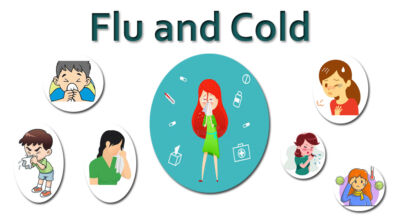
Both the flu and the cold are infectious diseases caused by viruses. However, the types of viruses related to each disease are different and cause different symptoms.
The flu and the cold have similar forms of contagion, being transmitted mainly through the air contaminated by saliva – with the virus – eliminated by the patient.
However, cold symptoms go away in about two to four days, while flu symptoms last for a week or more.
COLD is a viral respiratory infection, but there are dozens of different viruses that can cause the cold, such as Rhinovirus, Adenovirus, Parainfluenza.
- Fever does not usually appear with colds, except in young children.
- In the case of a cold, the patient has a runny nose, coughs and sneezes, but is more or less in a good mood.
Symptoms: Fever (less common and with low temperatures), muscle aches, runny nose, nasal congestion, sneezing, cough, mild sore throat.
THE FLU is a respiratory infection, which can be more or less serious, caused by the Influenza virus.
- Fever is common and is usually above 38°C, especially in children.
- The flu leaves the patient more prostrate, with a headache and, often, with pain in the muscles and joints.
Symptoms: Similar signs and symptoms of the common cold, but usually of greater intensity and duration. More severe respiratory manifestations, such as shortness of breath.
